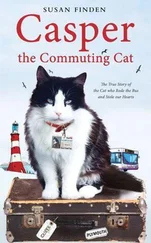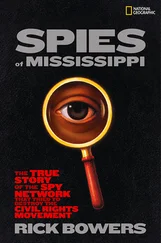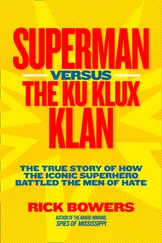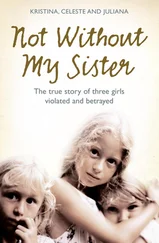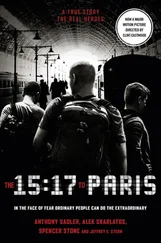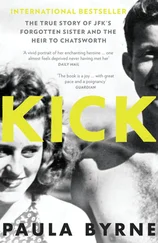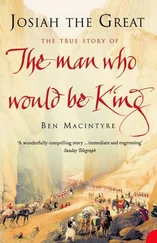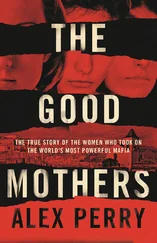On August 14, 1952, Chuck and Nancy had a daughter, Mary. They now had three girls. Perhaps Chuck Kopp, being old school, wanted to have a boy. In any event, Nancy became pregnant again. On August 2, 1954, at age 32, she gave birth to twin boys at Pasadena Memorial Hospital. There were complications. The babies had to be delivered by Caesarian section. The first son they named Walter Charles. The second, James Charles—Jim, the baby of the family. The boys were born two minutes apart—a period of time in history, Jim always joked, that Walter would never let his fraternal twin forget.
Jim would always look lovingly upon his days growing up in South Pasadena. See dad rousting the family well before dawn, New Year’s Day, 1965. The two 10-year-old boys and three teenage girls and mom and dad get on their bicycles and ride to Pasadena to secure a good spot for the Rose Parade. They are there, front row, to see the Spanish horses, the St. Bernards from Sierra Madre search and rescue team, marching bands.
Jim was like any other kid. He took six stitches in his eyebrow playing baseball. In his teens he hummed the melodies of the Beach Boys and Jan and Dean while body surfing at Huntington Beach—the future site of the Baywatch TV series, as he would later enjoy pointing out.
By the end of the 1960s Los Angeles was booming but California’s financial capital was still in San Francisco, where all the insurance head offices were located. For Chuck Kopp, an insurance lawyer, the Bay Area was a step up. When Jim and Walt were 13 years old, Chuck and Nancy moved the family just as protest and revolution reached their climax in the Bay Area. In 1967 Chuck bought a house that sat across the bay from the chaos in San Francisco proper, a modest house on Via Lerida in a suburb called Greenbrae in Marin County. Their home, like others in the neighborhood, was built into the side of a steep hill, a natural skateboard park for young Jim and his friends. From his living room window Chuck could see the land unfold like a carpet at his feet. In the distance, just barely visible, was the bay. He had a successful legal career, a family man who had fought for his country. He was a member of what would, in more nostalgic times to come, be called the Greatest Generation.
In the late 1960s Bart Slepian yearned to be a doctor but there was still the matter of earning a medical degree. As he entered his mid-20s, Bart had not reached his goal. He attended a community college in Rochester, New York, then enrolled at the University of Denver, majoring in zoology. But he was not a star student. He couldn’t get into medical schools in the United States. He wasn’t the only one—if your academic record was less than sterling, you didn’t stand a chance. Two out of three applicants were denied entry in the late sixties.
Barnett Slepian was born in 1946 into a family where expectations were high long before he entered the world. He was the youngest of four kids. Bart’s grandfather was a Russian Jewish immigrant who sold shoelaces from a pushcart in Cambridge, Massachusetts Bart’s father, Philip, attended Harvard, but following his graduation the family company failed, and Philip never recovered financially, struggling to make a living. He moved his wife and their four kids out of Boston to his in-laws’ apartment in McKeesport, in southwest Pennsylvania, then to Pittsburgh, and then to Rochester. He set himself up as a freelance writer, driving across the country in a Studebaker to research the origins of prominent citizens and writing their stories for small-town newspapers.
In spite of his personal struggles, or perhaps because of them, Philip, like his father, insisted on the best education for his children, pushing them hard. That was part of the family tradition, and part of his Jewish heritage as well. You do well in school. End of discussion. Bart perhaps felt the pressure differently. He was so much younger than his siblings, and he was tremendously shy. When his sister Serena chided him saying, “Look at you, Bart, the handsome boy.” Bart would look away with embarrassment, or cry.
As he got older Bart saw one of his brothers earn a doctorate in mathematics. Another became an ear-nose-and-throat specialist, Serena an educator. He eventually overcame his boyhood shyness, grew to enjoy putting people on, joking. With his failure to get into med school in the United States, Bart considered other avenues for earning a medical degree—and one of those was in Belgium, at the University of Louvain. Among other Americans he met there was a guy named Rick Schwarz, who grew up in the Bronx and could not get into New York University. Getting into the overseas school wasn’t the hard part—staying in was. The standards were high. Moreover, he had to study medicine in French. Bart often spent all-nighters studying with a friend named Carole Lieberman. His irreverent humor made her laugh. She saw him as this guy fighting the odds to become a doctor. He had no French, and barely enough money for food. She saw him as a Don Quixote figure, this guy armed for battle in life with little more than dry quips and an invincible will. He did not finish the program, and neither did Rick Schwarz, who in 1970 returned to New York to consider his options.
That November Bart visited his sister Serena in Reno, Nevada. Serena had been left a widow the previous July with a four-year-old daughter named Amanda. She was also eight months pregnant, struggling to pay for ballet and piano lessons and summer camp by, among other things, dealing cards at the blackjack table at Harrah’s. In her adult life, daughter Amanda would eventually grow to become a talented writer, and author an article for George magazine about her uncle in the days when he was struggling to make it:
November 1970. Dark, stringy Bart parked his rusting ’65 Chevy crammed with his every possession in front of my paternal grandparents’ white-trimmed house in Reno, Nevada. They were still ashen from my father’s death four months earlier; still ashen from my father’s elopement with my Jewish mother five years earlier. My eight months pregnant mother hugged her baby brother with a fervor that enraged me. My grandfather took a long time to say, “Come in. Come in.” In the den, conversation spluttered.
“So you missed the funeral because you were in Belgium?” my grandfather asked.
“Yes,” Bart answered.
“Medical school?”
Nod.
“Shouldn’t you be in classes right now?”
“I flunked out.”
“Cocktail?”
“No, thank you… It was my French. I didn’t spend enough time on my French.”
“Maybe you should make it easier on yourself and go to an American school?”
“They all rejected me.”
“Boy you must really want to be a doctor.”
Low, sardonic laugh.
Bart Slepian may have been a wilting flower as a young boy but he had, by 1970, at age 24, hardened himself to take whatever came at him with dark humor and a stubborn, take-no-crap attitude that went beyond conventional notions of determination. In the absence of a med school that he could both enter and finish, he drove a taxi for a time. Serena used to watch the faces of Amanda and her friends light up when Bart arrived in the cab and told the girls to hop in. He shoveled manure at a friend’s farm near his sister’s place in Reno. He would not let go of his dream of becoming a doctor. Backing down was not an option.
* * *
Greenbrae, California Redwood High School
1971
Inside the high school auditorium the bass creeps in, boom-boomba-boom-boom, the hi-hat clicks in smartly, tish-tish-tish, melting into hot licks from the trumpets, bam-bam-BAM, as Sammy Nestico’s The Blues Machine cooks on stage. School bandleader Syd Gordon stands off in the wings, lets the kids swing, then counts them in on the next number—“Here we go now!”—into the most famous swing song of all time, Glen Miller’s “In The Mood,” a throwback to the jitterbugging forties. In the old days, Syd remembered the kids in the band looked pretty sharp, wore red blazers. This being the 1970s, though, the players are dressed casual, no uniforms. In the front row, the jazz band features the saxes, in the middle the trombones, and the back row four trumpets. Off to the side are the piano, drums, guitar. In back, his lips working the brass trumpet mouthpiece, is a skinny, 16-year-old boy with darkrimmed glasses, rust-brown hair and pale blue eyes. Jim Kopp.
Читать дальше


